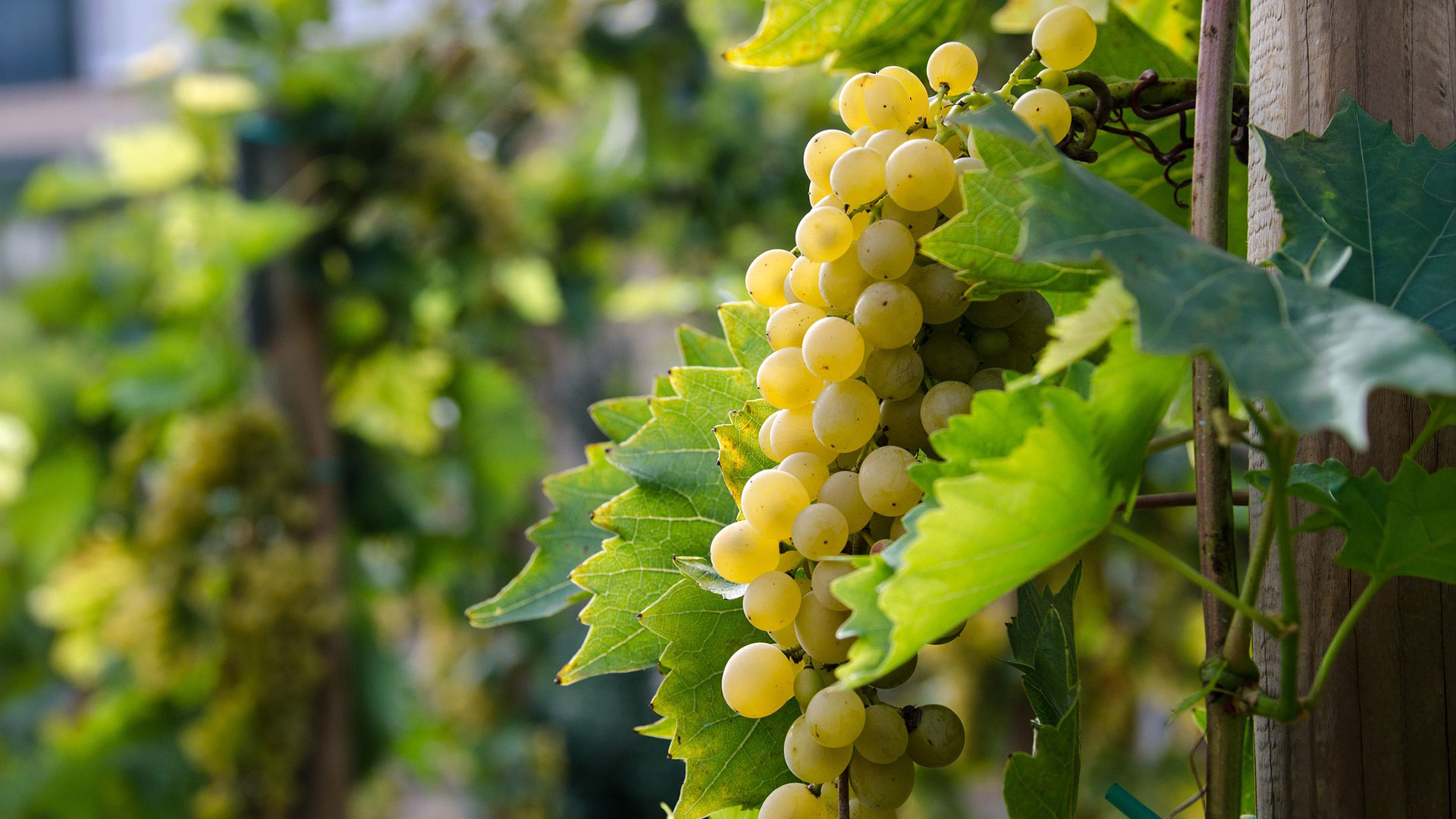Introduction to the Swiss white wine culture
Switzerland, known for its breathtaking landscapes and culinary specialties, is home to an impressive variety of white wines. Despite its comparatively small vineyard area, the country offers a wide range of grape varieties and wine styles that delight both locals and international wine lovers. The increasing popularity of Swiss white wines is due to their high quality and the diversity of grape varieties and wine regions.
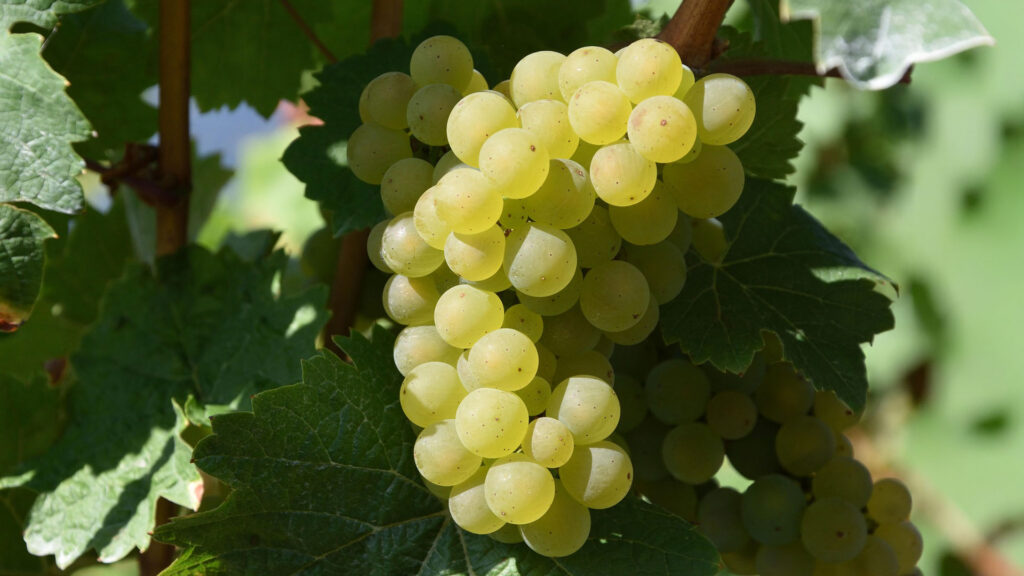
The most important grape varieties in Switzerland
The most important grape varieties for Swiss white wines include Chasselas, also known as Fendant in Valais, as well as Petite Arvine, Savagnin Blanc, Pinot Gris and Riesling Silvaner. These grapes thrive in the different climatic zones and soils of the Swiss wine regions and produce wines full of character. Other important white grape varieties are Müller-Thurgau, which dominates in German-speaking Switzerland, and Gewürztraminer, which is found in certain regions of Switzerland.
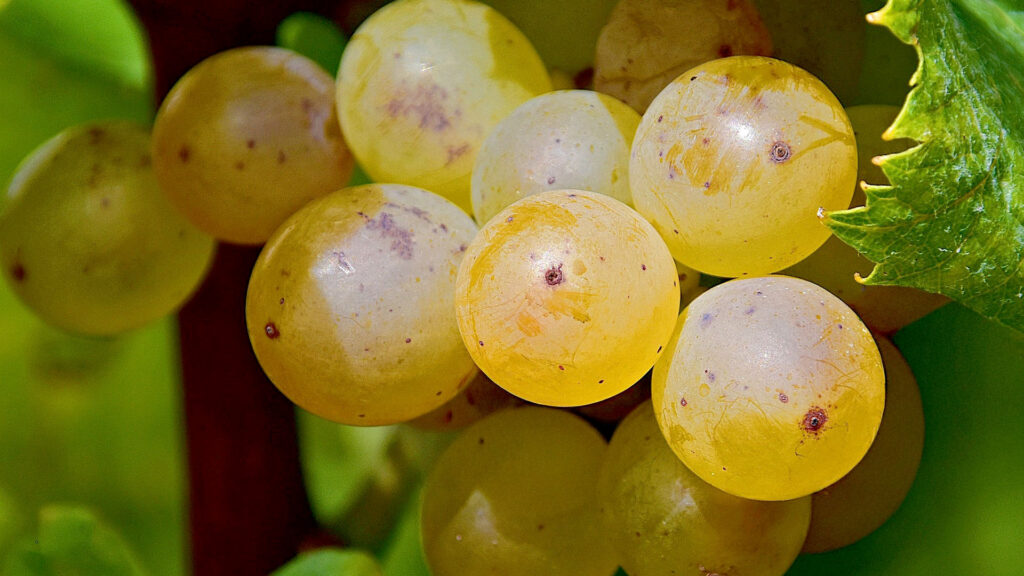
Wine-growing regions with tradition and character
Switzerland is divided into several cantons, including Valais, Vaud, Eastern Switzerland and Ticino. Each region produces its own special features and grape varieties, which make Swiss white wine so diverse.
Switzerland’s various wine-growing regions, such as the steep slopes of Lavaux or the vineyards in Valais, contribute to the quality and diversity of Swiss white wines thanks to their unique climatic and geographical conditions.
AOC Valais – Quality from the Valais
Valais, the largest wine-growing region in Switzerland, is known for its AOC-certified white wines. Wines such as Fendant, Petite Arvine and Heida are produced here, which impress with their quality and tradition. These AOC Valais wines are part of the prestigious ‘Vin de Pays Suisse’ category.
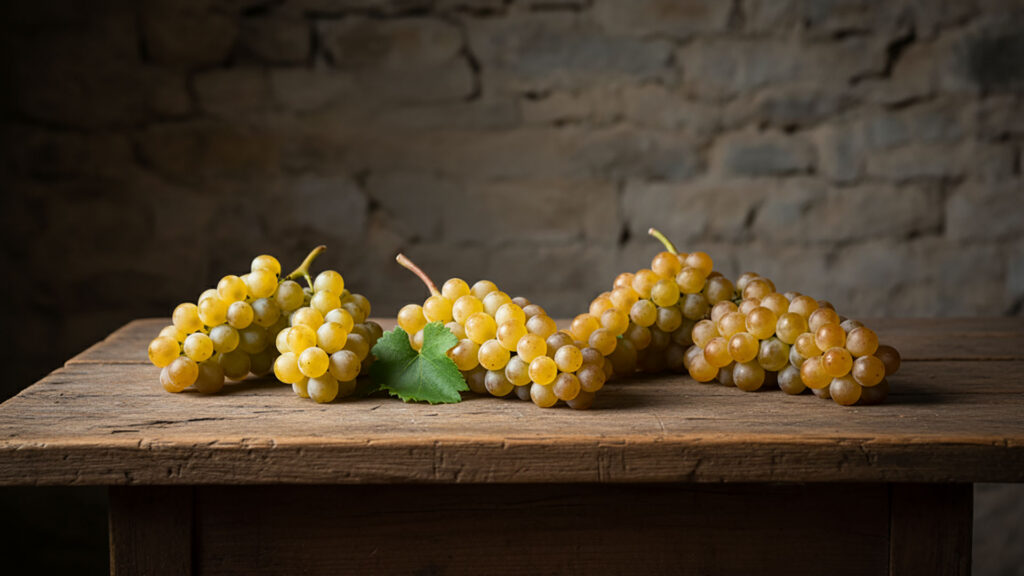
Chasselas – The classic among Swiss white wines
Chasselas, known as Fendant in Valais, is one of the oldest and most popular grape varieties in Switzerland. This white wine is characterized by its lightness, freshness and fine minerality and is an excellent accompaniment to traditional Swiss dishes. The Lake Geneva region is particularly important for the production of Chasselas, as the ideal growing conditions and the unique vineyard landscape around Lake Geneva allow for a variety of flavor nuances.
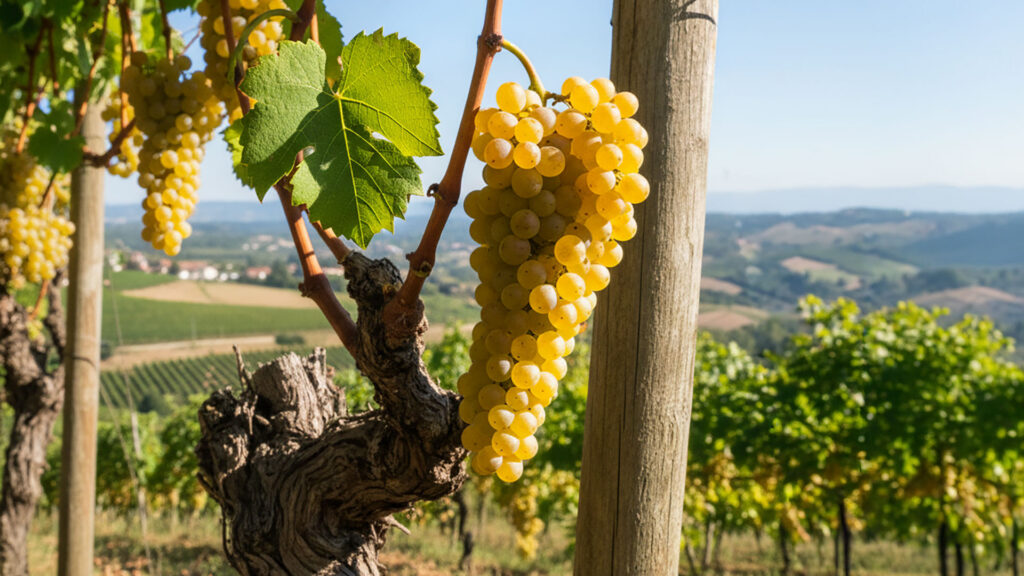
Petite Arvine – The elegant specialty
Petite Arvine is an indigenous grape variety of Valais and produces elegant, aromatic white wines with a fine acid structure. The acidity gives the wine structure and freshness, which intensifies the taste experience. These wines are particularly suitable as an accompaniment to fish dishes and seafood.
Savagnin Blanc – Full of character and complex
Savagnin Blanc, also known as Heida, is another specialty from Valais. The wines from this grape variety are complex, with a pronounced aroma and a long finish, ideal for special occasions. The young wine matures for several months in wooden, steel, glass or plastic containers, whereby the use of wood gives the wine more complexity and structure without it dominating.
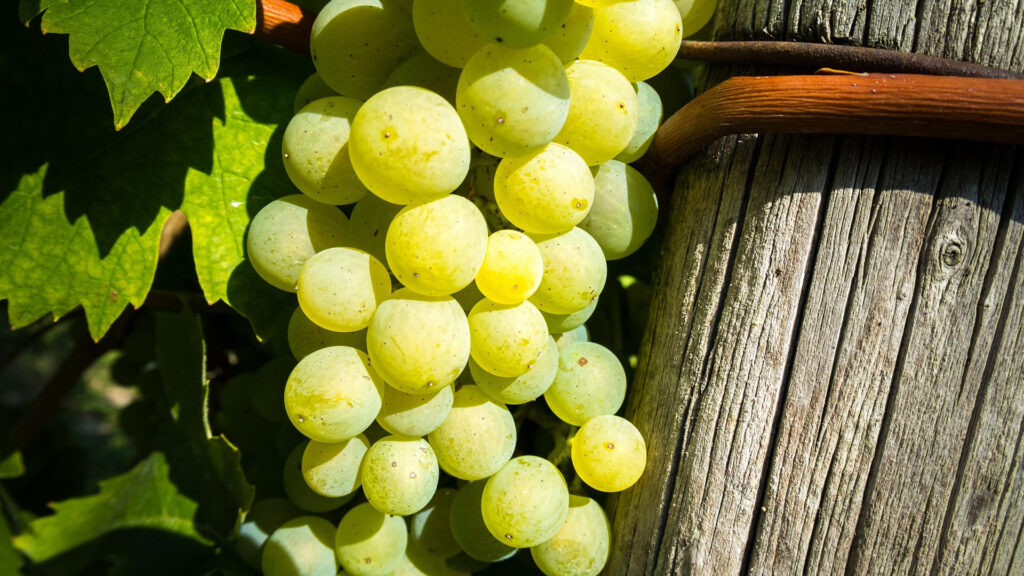
Pinot Gris and Riesling Silvaner – versatile all-rounders
Pinot Gris and Riesling Silvaner are widespread in Switzerland and produce fruity, balanced white wines. These wines are versatile and go well with a variety of dishes.
Another versatile white wine from Switzerland is made from the Viognier grape variety.
Unique white wines
The different styles of Swiss white wines
Swiss white wines are available in different styles, from light and fresh to complex and full-bodied. Regions such as Valais, Vaud and Ticino produce white wines that are characterized by their unique conditions. Grape varieties such as Pinot Gris, Chardonnay and Sauvignon Blanc are very popular in Switzerland and are produced in different styles. Swiss white wines are known for their high quality and their ability to pair with a variety of dishes. Prices for Swiss white wines vary according to region, grape variety and quality, but there is something to suit every taste and budget.
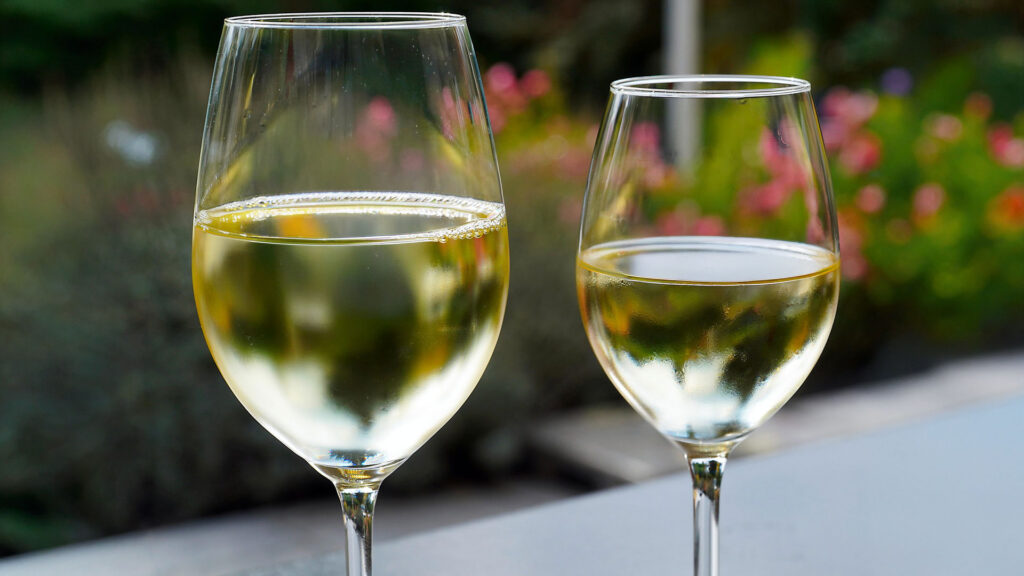
Wine and food – harmonious combinations
Swiss white wines are excellent accompaniments to a variety of dishes. The combination of wine and food is an important part of Swiss culture and offers numerous opportunities for enjoyable experiences.
Aperitif and appetizers
A fresh Chasselas or a light Riesling Silvaner is ideal as an aperitif or with light starters such as salads, terrines or fish dishes. A Merlot Bianco, a first-class white wine from southern Switzerland, is also an excellent aperitif that impresses with its fruity and refreshing characteristics.
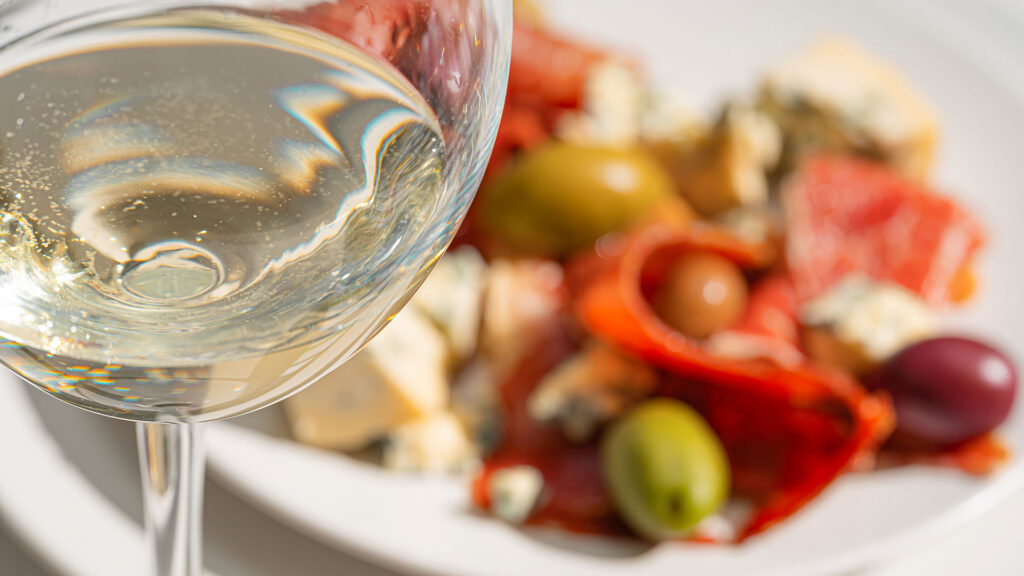
Main courses with fish and poultry
Aromatic white wines such as Petite Arvine or Savagnin Blanc go well with fish dishes such as trout Müllerin or pike-perch fillet. Another excellent choice is a Muscat, which is known for its traditional Valais origins and unique aromas. Poultry dishes, such as chicken breast with herbs, harmonize well with a Pinot Gris.
Cheese and fondue
Traditional Swiss cheese dishes such as fondue or raclette are traditionally accompanied by a Chasselas, whose freshness and minerality balance out the heaviness of the cheese. A Räuschling, an old Zurich grape variety, is also an excellent accompaniment to cheese dishes, as it thrives well in the local climate and complements the flavors of the cheese.
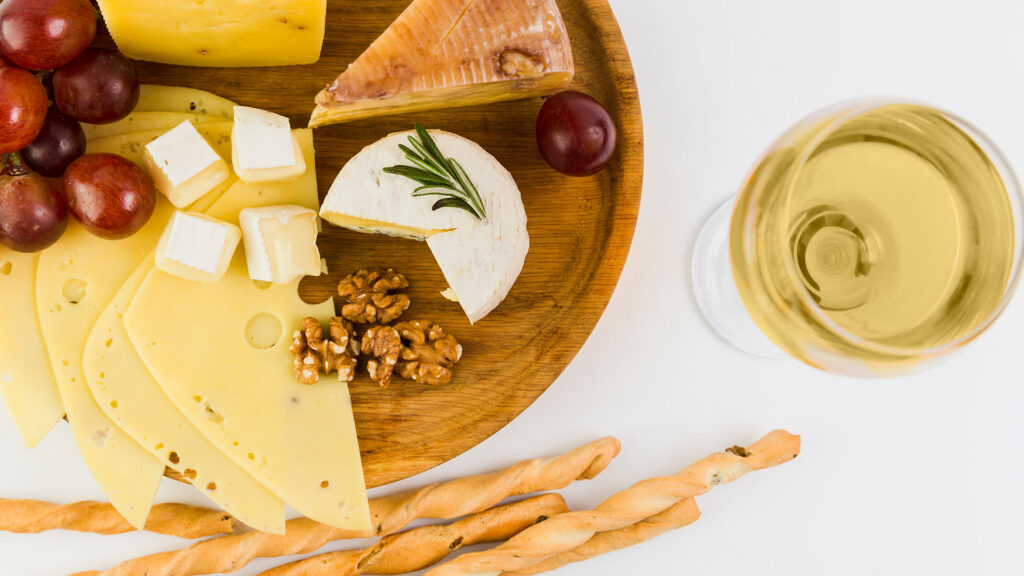
Vegetarian dishes
Vegetable dishes, such as asparagus with hollandaise sauce or ratatouille, pair well with a Riesling Silvaner or a light Chardonnay. Grape seeds play an important role in white wine production, as they help to avoid undesirable components such as bitter or coloring substances during the mashing process.
Desserts and sweet dishes
For desserts, residual sweet white wines such as a late-harvested Johannisberg or a noble sweet Heida are perfect for rounding off a meal with their sweetness and complexity. Must plays a particularly important role in the production of sweet wines, as it determines the desired sweetness and quality of the wine through fermentation.

The importance of AOC certification
The controlled designation of origin (AOC) guarantees the origin and quality of Swiss white wines. Wines with the AOC seal are subject to strict production guidelines and stand for the highest quality and authenticity. These products represent the best wine producers and offer a wide selection of first-class Swiss white wines.
Sustainability in Swiss viticulture
Many Swiss wineries use sustainable cultivation methods to protect the environment and ensure the quality of their wines. This includes not using chemical pesticides, promoting biodiversity and using renewable energies. One outstanding example is Jürg Obrecht, one of the region’s top producers, who is known for his sustainable practices.
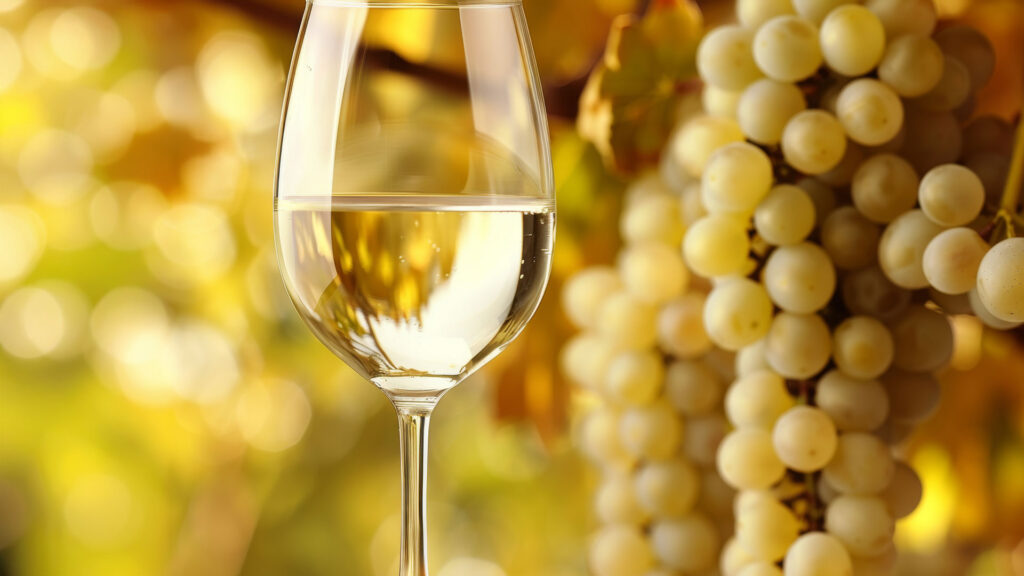
Wine storage and drinking maturity
Swiss white wines should generally be drunk young in order to preserve their freshness and fruitiness. However, some varieties, such as Savagnin Blanc or noble sweet varieties, benefit from a certain storage time and develop additional aromas. A large number of products relating to white wine from Switzerland can also gain considerably in quality through proper storage.
The ideal drinking temperature
The optimum drinking temperature for Swiss white wines is between 8 and 12 °C. Lighter wines such as Chasselas should be served cooler, while fuller-bodied wines such as Chardonnay can be enjoyed a little warmer. Wines from southern Switzerland, such as the refreshing and fruity Merlot Bianco, should also be served at around 10-12 °C in order to develop their full aroma.
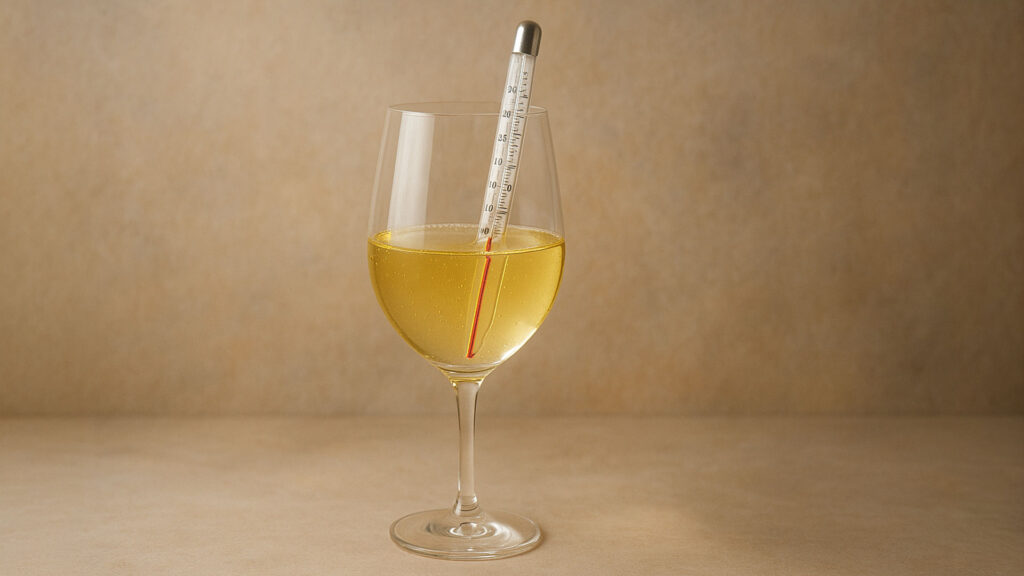
Online purchase of Swiss white wines
Many online stores offer detailed information on grape variety, vintage, ageing, drinking temperature and food pairing. You can also filter by AOC Valais, specific grape varieties such as Savagnin Blanc or Petite Arvine, as well as by region or producer. It is important to select wines from a renowned winery in order to guarantee the quality and authenticity of the wine.
The selection is huge: from fresh Chasselas from the Vaud region to complex Pinot Gris from Eastern Switzerland, there is a wine to suit every taste. Whether as a gift, for a cozy dinner or to add to your own wine cellar – Swiss white wines are also worth buying online.
Swiss wineries with a profile
Switzerland is home to numerous wineries that not only impress with their precision craftsmanship, but also with their innovative spirit. Many of these wineries work on small plots of land and consciously focus on quality rather than quantity. Producers such as those in Valais, Ticino and Graubünden are shaping the style of their region with clear signatures and contributing to the fact that Swiss white wines are attracting more and more attention at home and abroad. As one of the most mountainous countries in Europe, Switzerland’s various wine-growing regions offer optimal growing conditions for various white wine varieties thanks to their high altitude and specific climatic conditions.
The Swiss terroir: Alpine freshness in a glass
Switzerland’s climatic conditions – from the sun-drenched slopes of the Rhone Valley to the cool heights of the Bündnerland – offer ideal conditions for white wines full of character. The differences in soils, altitude and microclimate result in an astonishing diversity that is reflected in every bottle. This diversity is further enhanced by the numerous grape varieties that thrive in the Swiss terroir.
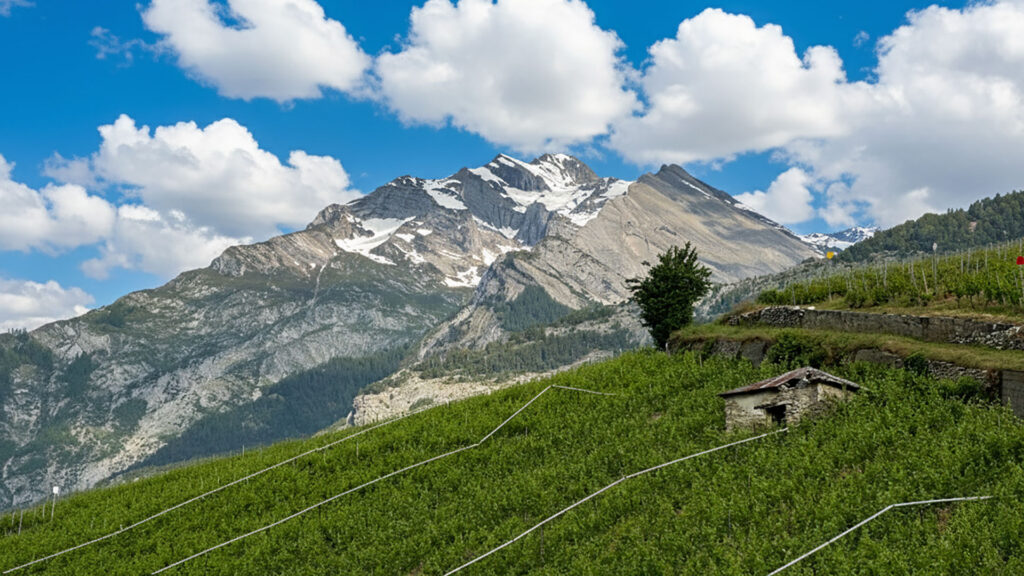
White wines for every occasion
Swiss white wines are not only suitable for classic meals, but also for aperitifs, celebrations or quiet moments for two. If you shop carefully, you will quickly find the right wine for every occasion with the right filters in the online store – whether uncomplicated, elegant or expressive. The spectrum ranges from traditional labels to modern cuvées that break new ground. The wine regions of western Switzerland in particular are known for their characteristic grape varieties such as Chasselas and Pinot Noir and play an important role in selecting the perfect wine.
Quality from the Alpine country
What makes Swiss white wines so special is the combination of precision craftsmanship, sustainable philosophy, regional character and living wine culture. Whether you prefer Fendant, Heida, Petite Arvine or Pinot Gris – Swiss white wines offer a clear profile that will win over discerning connoisseurs. The Merlot grape also plays an important role in wine production in southern Switzerland, where around 80% of the vineyard area is planted with Merlot, and the refreshing and aromatic white wine ‘Merlot Bianco’ is produced alongside classic red wines.
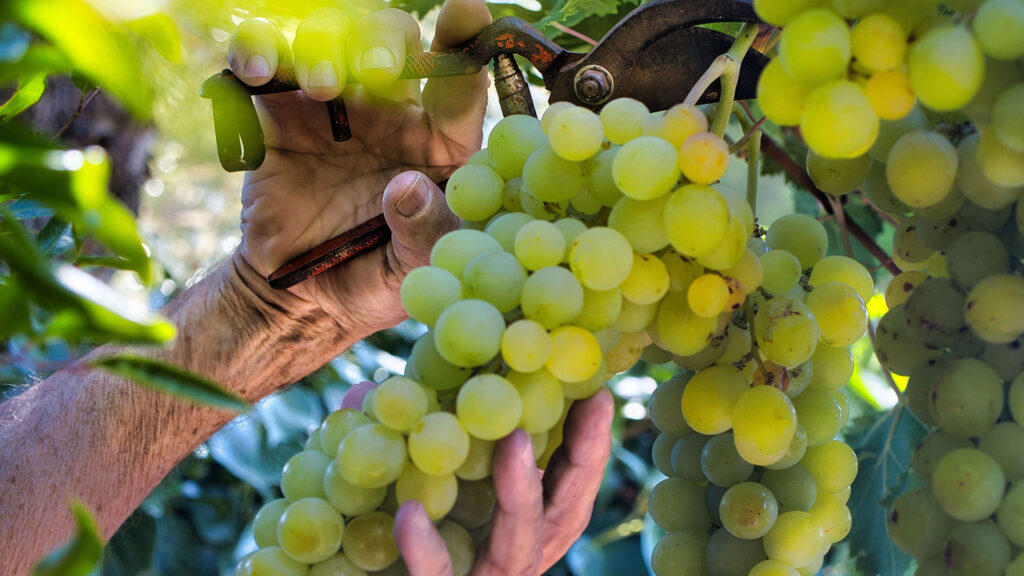
FAQ – Frequently asked questions about white wines from Switzerland
Which white wine varieties are particularly common in Switzerland?
The most important grape varieties for Swiss white wines are Chasselas (also known as Fendant in Valais), Petite Arvine, Savagnin Blanc, Pinot Gris, Riesling Silvaner and Heida. Each region has its own favorites and styles. These wines are often classified as ‘Vin de Pays Suisse’, which underlines their high quality and the close collaboration with renowned wineries.
Which Swiss wine regions are particularly famous for white wines?
Valais is the largest and best-known white wine region, thanks in particular to varieties such as Petite Arvine and Heida. The Vaud region (Lavaux), Ticino and Graubünden also produce top-class white wines. The Lake Geneva region is also of great importance for Swiss viticulture, especially for the production of white wines from the Chasselas grape, thanks to the ideal growing conditions and the unique vineyard landscape.
What goes best with a Swiss white wine?
White wines from Switzerland go well with fish dishes, poultry, vegetables, cheese and many traditional Swiss specialties such as fondue or rösti. Light, fruity wines are ideal for an aperitif or as an accompaniment to food. A Merlot Bianco, a first-class white wine from southern Switzerland, is an excellent accompaniment to these dishes.
Are Swiss white wines also known internationally?
Yes, many Swiss white wines have won prizes in international competitions. Valais in particular enjoys an excellent reputation abroad for its aromatic, storable white wines. As one of the most mountainous countries in Europe, Switzerland offers optimal growing conditions for various white wine varieties thanks to its high altitude and specific climatic conditions.
What is the best way to store Swiss white wine?
White wines from Switzerland should be stored in a cool, dark place with as little vibration as possible. Most wines develop their character within two to three years after harvest, but some high-quality varieties such as Savagnin Blanc or late-harvested varieties also mature for longer. During white wine production, it is important to avoid grape seeds in the mash to prevent unwanted bitter or coloring substances.

